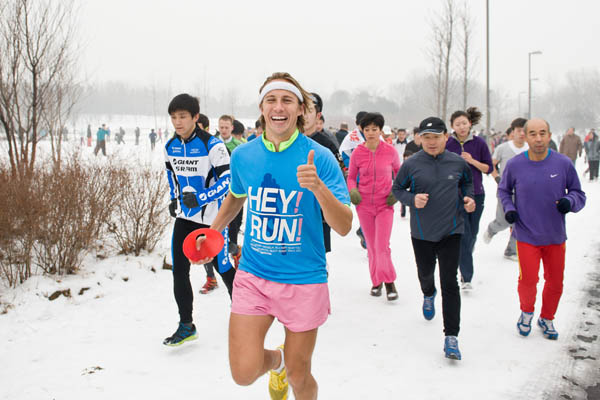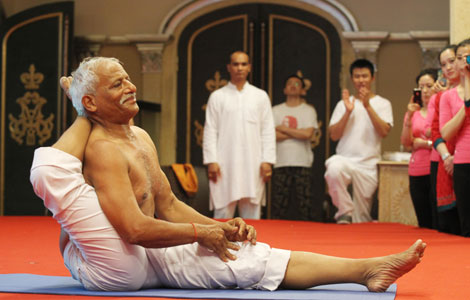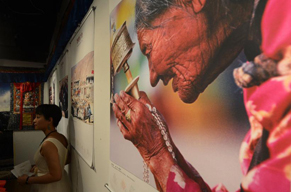

After shedding his business suits, Holmsater put on a bright yellow shirt and pink shorts to promote Heyrobics in parks, music festivals and other suitable occasions. He is also found in marathons and running activities around the country, where he leads Heyrobics as warm-up exercises.
"Yellow is the Swedish color, and the pink shorts means we are not taking ourselves so seriously," says Holmsater, who always greets people with a cheerful "hey", a wide smile and a hearty high-five.
 |
|
Holmsater puts on a shirt and shorts to promote Heyrobics at a snowfield cross country running event held in Beijing. |
There were few participants in Beijing initially, with most of them foreigners, Within two years, however, the team has expanded to about 30 instructors, who hold nearly 30 classes a week in the capital city. They now have centers from Chaoyang Park to Sanlitun to the Beijing suburbs.
The bigger classes are at the Workers' Stadium and attract more than a hundred participants. About half the students are Chinese.
"I think there are about 2,500 people doing Heyrobics in Beijing today," Holmsater says.
He believes the sport's attraction comes from its welcoming attitude, easy for both the wallet and the mind. The fee participants pay is used to cover venue charges.
There are also some free sessions.
"The problem in China today is that gyms are very expensive, and we are trying to make exercise as cheap as possible so everyone can afford to join," says Holmsater, saying his challenge is to attract people who are sedentary rather than to compete with the gyms for business.
"We try to tell people it's OK, if you feel you can't do the movements, you can take a rest. If you feel something is complicated, we don't say it's wrong, but you can do it your own way, and we'll still like it.
"I think that's why we attract so many people who don't normally like exercising. We talk about the soul, and the body will come with the soul," he says.



